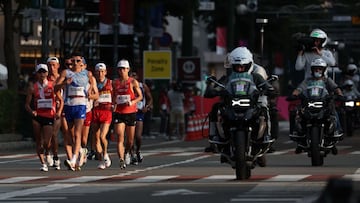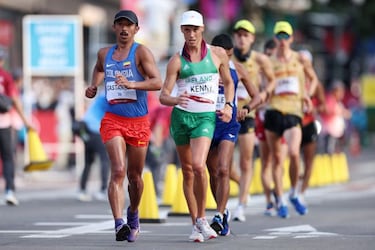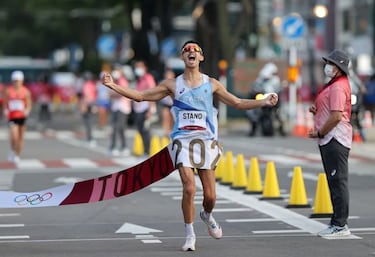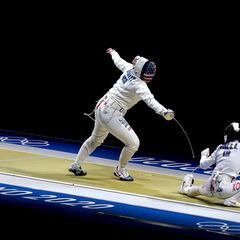Race walking at Tokyo Olympics 2021: rules, distances and courses
There are currently three race walking events at the Olympics. At this summer's Games they're being held in Sapporo, some 800km north of Tokyo.


Race walking has been a modern Olympic sport in various forms since the 1904 Games in St Louis, appearing first as an 880-yard event as part of the ‘all-around championship’, a competition that was an early version of the decathlon.
It first featured as a standalone event at the London Olympics four years later, and since 2000 three versions of the sport have been held at the Games: the men’s 20km race walk, the men’s 50km race walk and the women’s 20km race walk.
The women’s 20km race was introduced at the Sydney Games, while the men’s 20km event first took place at the 1956 Olympics in Melbourne and the men’s 50km walk came in at Los Angeles 1932.
See also:
- How long is a marathon? How far is it in miles?
- Marathon rules, distance and course at the Tokyo 2021 Olympics
What are the rules of race walking?
Race walking differs from running in that competitors must keep at least one foot in contact with the ground at all times. Violation of that rule is known as ‘lifting’. Walkers must also keep their their advanced leg straight as their trailing leg moves past it.
Judges stationed on the race route monitor whether athletes are abiding by these rules, and will hold up paddles for ‘loss of contact’ and ‘bent knee’ - marked with the symbols ‘~’ and ‘<‘, respectively - to offending competitors. A walker is then disqualified if they receive three such warnings.
Rule breaking must be visible to a judge’s naked eye, making it possible for athletes to escape a warning for lifting as long as the loss of contact with the ground is brief enough.
According to Iñaki Gómez, a Canadian race walker who finished 13th in the men’s 20km event at London 2012, “Your eye can catch anything that is slower than 0.6 seconds, so the quickest lifter is going to be okay within the rules. You have to push the envelope, you want to be on the edge.”

Race walking at Tokyo Olympics
At this summer’s Olympics, the race walks and marathons are taking place at Odori Park in Sapporo, about 800km north of Tokyo, having been switched from the Japanese capital due to concerns over the heat.
However, despite organisers’ efforts to provide more clement race conditions, the men’s 20km walk, which was held on Thursday, took place amid reported temperatures of 33ºC. Participants were seen dousing themselves with water and drinking down fluid at every opportunity.
Italy’s Massimo Stano took gold, finishing with a time of 1:21:05 ahead of Japanese pair Koki Ikeda and Toshikazu Yamanishi. The USA’s Nick Christie came 50th, with a time of 1:34:37.

Related stories
The men’s 50km race walk is scheduled for 4:30pm EDT on Thursday, while the women’s 20km race walk is to be held at 3:30am EDT on Friday. Although there are no US athletes in the men’s 50km, there is American interest in the women’s 20km, in the shape of Californian Robyn Stevens.
The race walk route consists of 1km loops at Odori Park in the 20km race, and 2km loops in the 50km event.

